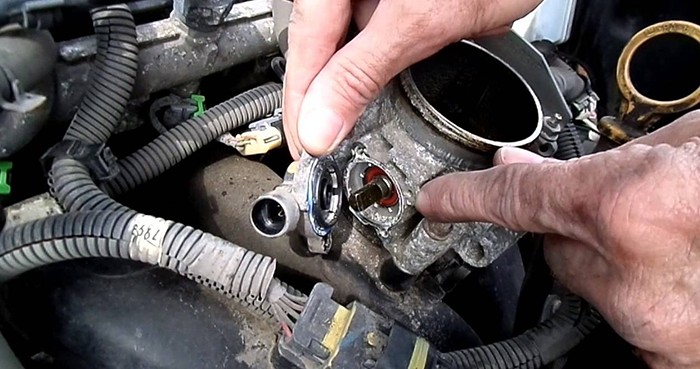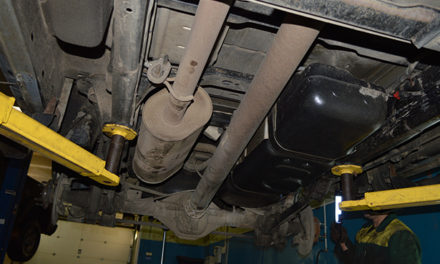The throttle position sensor (TPS) is a potentiometer located on the throttle body and attached to the throttle plate opposite the throttle linkage. It has three wires: battery voltage, a 5-volt reference, and a signal wire. Its purpose is to signal to the powertrain control module (PCM) the amount and speed of the throttle opening. This is an indication of the demand placed on the engine at any given time.
The PCM sees this signal as an indication of acceleration or load and computes the appropriate fuel trim strategies, injector durations, and ignition advance necessary to accommodate the real-time demand.
If the PCM has set a code indicating a TPS failure, it will normally include the type of failure as well. This could be TPS-low input, high input, no signal, or out of range.
Testing Procedures
- With the engine off, disconnect the electrical connector on the TPS.
- Turn the key on to the accessory position, not cranking the engine.
- With a Volt/Ohmmeter, back probe the engine side harness terminals for the reference signal (5 volts). If there’s no voltage at any terminal, a wiring problem exists between the harness and PCM, the PCM is not powered or grounded properly, or the PCM is defective.
- The problem is usually right at the base of the electrical connector, a broken wire, or a pulled-out pin in the connector.
- Plug the connector into the TPS.
- With the key on, back probe the signal wire. Probe this wire for a signal as the TPS opens.
- The signal wire should show approximately 0.5 to 1.0 volts with the throttle closed. As the throttle is advanced to wide open, the voltage should climb smoothly to approximately 4.5 to 5 volts with no dropouts or glitches. If any are observed or the voltage does not climb, the sensor is bad.
Replacement Procedure
- Disconnect the connector on the TPS.
- Remove the screws on the side of the sensor and pull it straight off.
- Install the new sensor over the throttle plate shaft and insert the tang on the correct side of the slot in the shaft.
- Install the screws, and torque to the correct specifications and reconnect the electrical connector.






